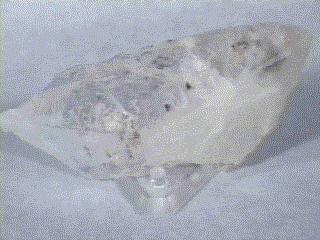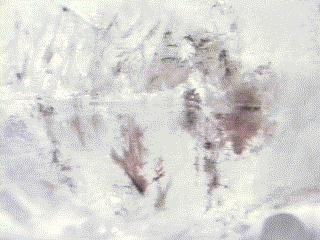 The Mineral MONTMORILLONITE
The Mineral MONTMORILLONITE
- Chemistry: (Na, Ca)(Al, Mg)6(Si4O10)3(OH)6 - nH2O, Hydrated Sodium Calcium Aluminum Magnesium Silicate Hydroxide
- Class: Silicates
- Subclass: phyllosilicates
- Group: The Clays and also The Montmorillonite/Smectite Group.
- Uses: as a drilling mud and as a water clogging agent in soil.
Specimens
As a mineral specimen, montmorillonite does not get much consideration. Usually, pure samples of montmorillonite are massive, dull and not very attractive. However, as with all minerals, there are those exceptional specimens that defy the norm. Montmorillonite has been found as attractive pink inclusions in quartz crystals, and these make for interesting specimens.
PHYSICAL CHARACTERISTICS:
- Color is usually white, gray or pink with tints of yellow or green.
- Luster is dull.
- Transparency crystals are translucent and masses are opaque.
- Crystal System is monoclinic; 2/m.
- Crystal Habits: never in large individual crystals, usually found in compact or lamellar masses. Also seen as inclusions in quartz as fibers and powder-like masses.
- Cleavage is perfect in one direction, basal; not seen in massive specimens.
- Fracture is uneven to lamellar.
- Hardness is 1- 2 (can sometimes leave marks on paper)
- Specific Gravity is variable from 2.3 - 3 (average)
- Streak is white.
- Other Characteristics: crystals expand to many times their original volume when added to water.
- Associated Minerals include other clays, garnets, biotite and quartz.
- Notable Occurances: include sources in France, Italy, USA and many other locallities world wide.
- Best Field Indicators softness, color, soapy feel, luster and expandability when added to water.






